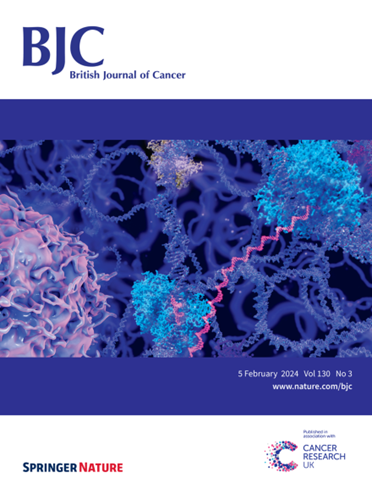Claudin18.2-positive gastric cancer-specific changes in neoadjuvant chemotherapy-driven immunosuppressive tumor microenvironment
IF 6.4
1区 医学
Q1 ONCOLOGY
引用次数: 0
Abstract
Claudin 18 isoform 2 (CLDN18.2) is a potential therapeutic target in gastric cancer (GC). However, combining chemotherapy with anti-CLDN18.2 antibodies has shown limited efficacy in CLDN18.2-positive GC, and chemotherapy-induced changes in the tumor microenvironment (TME) remain unclear. This study analyzed 37 GC samples, including 11 CLDN18.2-positive cases, using single-cell RNA sequencing and multiplex immunofluorescence to assess chemotherapy-driven TME changes in CLDN18.2-positive GC. In chemotherapy-treated CLDN18.2-positive GC, cytotoxic natural killer (NK) cells displayed antibody-dependent cytotoxicity (ADCC)-related genes at lower levels than in untreated CLDN18.2-positive GC, while regulatory T cells (Tregs) and tumor-associated macrophages (TAMs) showed TGFB1 expression at higher levels. Additionally, NK cells, Tregs, and TAMs were more abundant in chemotherapy-treated than untreated CLDN18.2-positive GC. These chemotherapy-induced changes were absent in CLDN18.2-negative GC. Cell-cell interaction analysis identified unique interactions in chemotherapy-treated CLDN18.2-positive GC, including CCL5-CCR5 signaling between cytotoxic NK cells (Sender) and effector Tregs (Receptor) and TGFB1-TGFBR signaling between effector Tregs (Sender) and TAMs (Receptor). Cytotoxic NK cells expressed CCL5 at higher levels, CCR5-positive Tregs were more prevalent, and TAMs exhibited higher TGF-β receptor signature scores in chemotherapy-treated than untreated CLDN18.2-positive GC. Our findings indicate that chemotherapy can drive immunosuppressive TME modifications specific to CLDN18.2-positive GC.

claudin 18.2阳性胃癌在新辅助化疗驱动的免疫抑制肿瘤微环境中的特异性变化
背景:Claudin 18 isoform 2 (CLDN18.2)是胃癌(GC)的潜在治疗靶点。然而,化疗联合抗cldn18.2抗体对cldn18.2阳性胃癌的疗效有限,化疗诱导的肿瘤微环境(TME)变化尚不清楚。方法:本研究分析了37例GC样本,其中包括11例cldn18.2阳性病例,采用单细胞RNA测序和多重免疫荧光技术评估化疗驱动的cldn18.2阳性GC的TME变化。结果:在化疗治疗的cldn18.2阳性GC中,细胞毒性自然杀伤细胞(NK)细胞中抗体依赖性细胞毒性(ADCC)相关基因的表达水平低于未治疗的cldn18.2阳性GC,而调节性T细胞(Tregs)和肿瘤相关巨噬细胞(tam)中TGFB1的表达水平较高。此外,NK细胞、Tregs和tam在化疗后比未治疗的cldn18.2阳性GC中更丰富。这些化疗引起的变化在cldn18.2阴性GC中不存在。细胞-细胞相互作用分析确定了化疗治疗的cldn18.2阳性GC中独特的相互作用,包括细胞毒性NK细胞(发送者)和效应Tregs(受体)之间的CCL5-CCR5信号传导以及效应Tregs(发送者)和TAMs(受体)之间的TGFB1-TGFBR信号传导。细胞毒性NK细胞表达CCL5水平更高,ccr5阳性Tregs更普遍,化疗组tam比未治疗的cldn18.2阳性GC表现出更高的TGF-β受体特征评分。结论:我们的研究结果表明,化疗可以驱动cldn18.2阳性GC特异性的免疫抑制性TME修饰。
本文章由计算机程序翻译,如有差异,请以英文原文为准。
求助全文
约1分钟内获得全文
求助全文
来源期刊

British Journal of Cancer
医学-肿瘤学
CiteScore
15.10
自引率
1.10%
发文量
383
审稿时长
6 months
期刊介绍:
The British Journal of Cancer is one of the most-cited general cancer journals, publishing significant advances in translational and clinical cancer research.It also publishes high-quality reviews and thought-provoking comment on all aspects of cancer prevention,diagnosis and treatment.
 求助内容:
求助内容: 应助结果提醒方式:
应助结果提醒方式:


